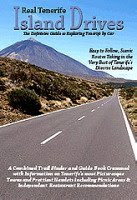When we first moved to Puerto de la Cruz a bank teller told us carnaval was for the young. At the time I thought she was an old sourpuss; however, I’m starting to come around to her point of view. The spirit is willing, but the body is weak and late night parties combined with standing for hours waiting for and watching parades takes its toll much more than it used to.
Carnaval didn’t start well, the new mayor (really an old mayor rehashed) decided in his infinite wisdom that Puerto wasn’t going to have an opening parade, so carnaval in Puerto de la Cruz got off to a damp squib of a start. However, we did get to eat doorstopper sized catalanas at the best food stall in the universe.
By Monday night, usually one of the best party nights, carnaval fever had picked up and Andy and I ‘costumed up’ and headed into town for an overdose of partying and people watching. If you want to get a real insight into the Tinerfeño character then you should experience a carnaval street party. Booze is consumed like there’s no tomorrow, yet in six years of attending these all night parties I’ve never seen a hint of trouble – only seas of slightly vacant, smiling faces.
An orange weather alert for high winds and rain put a bit of a dampener on the Burial of the Sardine which was postponed in both Santa Cruz and Puerto, but by Friday night, the worst of the weather had passed and the highlight of Puerto’s carnaval, the high heels drag marathon, was able to take place without threat of the contestants' skirts being blown over their heads – not that they would have been worried by that – flashing your drawers, or better (or worse depending on your position), fake genitals is almost compulsory. This year there were over 300 entries into the race and watching them all get introduced by the compere was a marathon in itself. My favourite outfit was a Shiva who had beer cans in some of her many arms.
By the time of the closing parade on Saturday, I was flagging. However, being one of the most photogenic events of the year it’s too good an opportunity to get some real stand out photos. The big decision is always where to position myself. I normally never get it completely right – the perfect quiet spot becomes flooded with people as soon as the parade starts; last year it was too sunny, creating dark, dark shadows – but this year I got lucky. It wasn’t full sunshine, but it was bright and I found a spot which remained remarkably people free allowing me to crouch, stand, kneel, stand on my head etc to get the angle I wanted.
By the end of Saturday night I was both relieved and saddened that carnaval was over for another year. Of course to say it’s over is a bit misleading as it spreads out to other towns now, but although still fun they’re not quite in the same league as Santa Cruz and Puerto’s.Anyone arriving in town this week will find a very different and subdued Puerto – that’s because everyone is exhausted. Come back in a month and we’ll all be desperate for the next fiesta.








